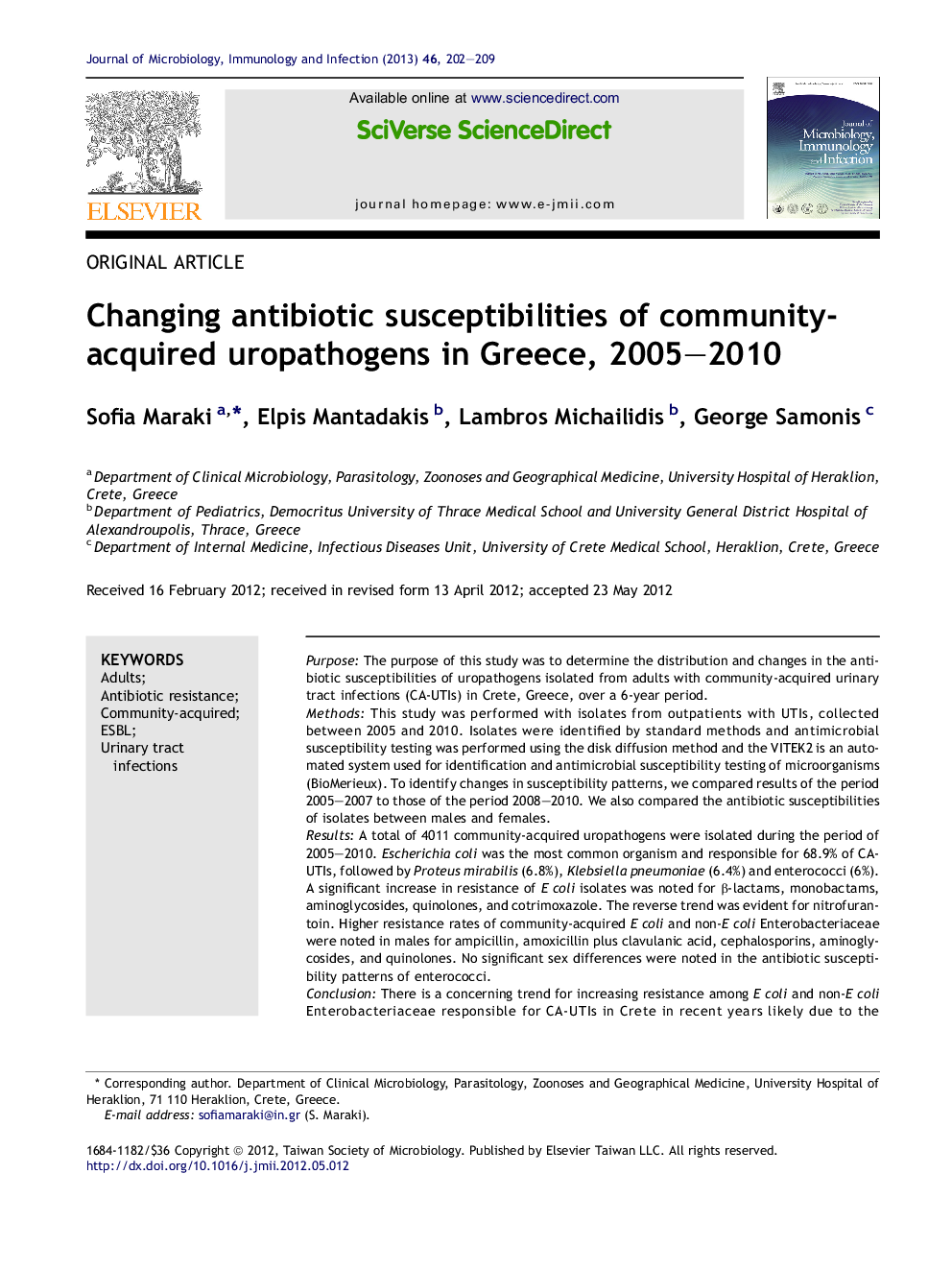| Article ID | Journal | Published Year | Pages | File Type |
|---|---|---|---|---|
| 3378361 | Journal of Microbiology, Immunology and Infection | 2013 | 8 Pages |
PurposeThe purpose of this study was to determine the distribution and changes in the antibiotic susceptibilities of uropathogens isolated from adults with community-acquired urinary tract infections (CA-UTIs) in Crete, Greece, over a 6-year period.MethodsThis study was performed with isolates from outpatients with UTIs, collected between 2005 and 2010. Isolates were identified by standard methods and antimicrobial susceptibility testing was performed using the disk diffusion method and the VITEK2 is an automated system used for identification and antimicrobial susceptibility testing of microorganisms (BioMerieux). To identify changes in susceptibility patterns, we compared results of the period 2005–2007 to those of the period 2008–2010. We also compared the antibiotic susceptibilities of isolates between males and females.ResultsA total of 4011 community-acquired uropathogens were isolated during the period of 2005–2010. Escherichia coli was the most common organism and responsible for 68.9% of CA-UTIs, followed by Proteus mirabilis (6.8%), Klebsiella pneumoniae (6.4%) and enterococci (6%). A significant increase in resistance of E coli isolates was noted for β-lactams, monobactams, aminoglycosides, quinolones, and cotrimoxazole. The reverse trend was evident for nitrofurantoin. Higher resistance rates of community-acquired E coli and non-E coli Enterobacteriaceae were noted in males for ampicillin, amoxicillin plus clavulanic acid, cephalosporins, aminoglycosides, and quinolones. No significant sex differences were noted in the antibiotic susceptibility patterns of enterococci.ConclusionThere is a concerning trend for increasing resistance among E coli and non-E coli Enterobacteriaceae responsible for CA-UTIs in Crete in recent years likely due to the inappropriate use of broad spectrum antibiotics, as a substitute for precise diagnostics and/or to increase the chances of therapeutic success.
